Mount Mangdang Han culture tourism scenic spot
Located in Yongcheng City, Henan Province, Mangdao Mountain Han Culture Tourist Area is a national AAAAA-level scenic spot which integrates landscape sightseeing, cultural appreciation and ecological leisure. Lianhuo Expressway and Jiqi Expressway pass through the scenic spot. Yongcheng North Station of Zhengzhou-Xuzhou High-speed Railway is only 4.5 kilometers away from the scenic spot.
Mangdao Mountain Han Culture Tourist Area covers an area of 14 square kilometers. There are such scenic spots as King Han Liang Tomb Group, Liu Bang Snake Cutting Place, Han Xiongfeng, Mangdao Mountain Geological Park, Chen Sheng Tomb and Confucius Cliff. Chinese treasures such as the four gods cloud atlas and the golden hazel jades unearthed from the imperial mausoleum of the Western Han Dynasty are intertwined and glorious.
Mangdao Mountain Han Culture Tourism Scenic Area is a national pilot unit for standardization of Han culture inheritance service. On February 25, 2017, Mangdao Mountain, Yongcheng City, Henan Province, was officially promoted to the national AAAAA-level tourist attraction.
Location traffic
Mangdao Mountain Han Culture Tourist Area is located in Mangshan Town, Yongcheng City. It is connected with six major tourist cities, Xi'an, Luoyang, Zhengzhou, Kaifeng, Xuzhou and Lianyungang. It is about 80 kilometers east of Xuzhou Guanyin Airport and 90 kilometers west of Shangqiu Airport. Yongdang Highway and Shangxu Highway run through it. Lianhuo Highway and Jiqi Highway meet with the word "ten". There are two highway entrances and exits of Lianhuo Highway, Mangdaoshan Station and Jiqi Highway, Yongcheng North Station, which are 4.5 kilometers away from Yongcheng North Station of Zhengzhou-Xuzhou High-speed Railway.
Climatic environment
Mangdao Mountains is a warm temperate monsoon climate with distinct seasons and abundant sunshine. The annual average temperature is 14.34 C. The annual average rainfall is 871.3 mm. The rainfall is abundant and the temperature is moderate. Alkali River and Wangyin River pass through.
Geology and geomorphology
The Mangdao Mountains were formed in the middle and late Yanshan Mountains, between 0.8 and 137 million years ago. Mangdao Mountain is mainly composed of limestone and fine-grained rock. The main peaks of Mt. Mangdao distribute in turn light stone soil, limestone soil, cinnamon soil, chao-cinnamon soil and silt soil from the top to the front of the mountain. The Mangdao Group of Mountains is a denudation remnant hill landform, with a total of more than 20 large and small hills. The main peak of Mount Mangdao is in the middle, with an altitude of 156.8 meters. Among them, Baoan Mountain, Lishan Nanshi, Qishan towering, Loess Mountain, Tiejiao Mountain, Fuzishan, Taoshan, Moshan, Ma Shan, Xushan, Zhoushan, Wang Shan, Yushan and so on are scattered in the north.
Main attractions
Mount Mangdao is the only mountain group in the eastern plain of Henan Province. The cultural relics of Qin and Han dynasties are abundant. The Han cultural tourism scenic spot of Mount Mangdao covers an area of 14 square kilometers. Now it is open to the outside world: the King Mausoleum scenic spot of Han Liang, the Scenic Spot of Confucius Mountain, the Scenic Spot of Chen Shengyuan, the Scenic Spot of Dahanxiong, and the Mangdao Mountain
Liu Bang's snake cutter
Liu Bang's snake-cutting place is a monument erected by later generations in memory of Liu Bang's snake-cutting uprising, which is located at the south foot of the main peak of Mangdao Mountain. Founded in the period of Emperor Wendi of the Han Dynasty, it has been rebuilt many times. It is now a replica of the Ming Dynasty stone tablet with a height of 2.39 meters. The inscription "Sun and Moon" and "Hangao Chopping Snake Place" are the big characters. The tablet is a huge pedestal. The night light stone tablet shows Liu Banggao's miraculous phantom and is praised as "the wonder of the world".
Queen's tomb
The Queen's Mausoleum is situated at the north peak of Baoan Mountain in Mangdao Mountain, situated on the west, East and south of Liangxiao King's Mausoleum, about 200 meters. It has two tomb paths, about 80 meters long and 5.5 meters wide in North and south. It has 34 side chambers and corridors, with a flat area of 16,000 square meters and a volume of about 6,500 cubic meters. Its magnificent scale and complex description are the largest stones found in China so far. Chamber mausoleum, known as "the world's first stone chamber mausoleum". There are the earliest ice cabinets, toilets and mysterious Acacia Road in the tombs of China. In 1991, the Queen's Mausoleum was rated as "the top ten archaeological discoveries of 1991".
Liang Xiao Wang Ling
The Tomb of King Liang Xiao is the tomb of King Liu Wu of Liang Xiao, and the north peak is the tomb of Mrs. Liu Wu, Queen Li. It belongs to the underground palace where husband and wife bury together in the same grave and different caves. The Mausoleum of King Liang Xiao, with a total length of 96 meters and a maximum width of 32 meters, covers an area of about 700 square meters. It was appraised as one of the ten new archaeological discoveries during the Eighth Five-Year Plan period in 1994 and approved as one of the key cultural relics protection units in 1996.
Liang Gong tombs
The Tomb of King Liu Mai of the Liang Dynasty is located in the southeast of the tomb of King Xiao of the Liang Dynasty. During the excavation, a large number of precious cultural relics, such as horse and chariots, terracotta warriors, weapons, about 5.5 tons, 225,000 copper coins, toilets and terracotta maids, known as the Oriental Venus, were unearthed in the tombs and palaces. In the front hall of the palace, the national treasure-level cultural relic "Four Gods and Clouds" , representing the highest achievement of painting art in the Western Han Dynasty, is known as "Dunhuang before Dunhuang, Dunhuang outside Dunhuang" . The Mausoleum of the King of Liang is an important archaeological discovery of the mausoleum of the King of Liang in the Han Dynasty in Mangdao Mountain. It was named one of the ten new archaeological discoveries in 1994.
Chen Sheng tomb
Chen Sheng's tomb is located at the southwest foot of the main peak of Mount Mangdao, sitting north to south. It is a stone voucher mound. The existing mound is 2.6 meters high and its circumference is about 27.3 meters. Blue stone walls were built around the tomb, and a tall stone tablet was erected in front of the tomb. The inscription "Tomb of Chen Shengzhi, Leader of the Peasant Uprising in the Late Qin Dynasty" is written by Guo Moruo. The tomb is surrounded by mountains and is hidden between pines and cypresses. After Liu Bang declared himself emperor, he sent 30 families to guard the graves, and the local people still recognize him as the descendants of the gravekeepers.
Great Han
Located at Chidi Peak, the main peak of Mount Mangdao, the heroic wind of the Great Han Dynasty was built to commemorate the 400-year-old Han Dynasty founded by Liu Bang in the snake-cutting uprising in Mount Mangdao. The statue is 29.9 metres high, 11 metres high and 40.9 metres high. It is the largest statue of historical figures in Asia. Tourists can take the elevator to the sightseeing platform located on the shoulder of the statue. The 80-mile landscape around Mt. Mangdao will give them a panoramic view. Tourists will really experience the artistic conception of "being at the top of the mountain and seeing the small mountains".
Fuzi cliff
Confucius Cliff, also known as Confucius shelter, is located in the southern slope of the Confucius Mountain, a natural cave. Legend has it that in the late Spring and Autumn Period, Confucius led his disciples to travel around various countries to Cao Shi Song Dynasty by way of Mount Mangdao, where it rained heavily, and where Confucius'teachers and disciples gave lectures. The cave is about 8 meters north and south, about 10 meters east and west, and 2 meters high. The walls are neat and the bottom of the cave is smooth. There is a statue of Confucius stone in the cave. It is arched, necked and sitting on its knees. The statue is 1 metre high. It is exquisitely carved and lifelike. The "Shiya Dicui" here is one of the eight sceneries of Yongcheng.
Confucian Temple
The Confucius Temple, also known as the Confucian Temple, is located at the southern foot of the Confucius Mountain in Mangdao Mountain. Confucius Mountain was named for its shelter from rain, sun-drying books and lectures during his travels to other countries. Later generations commemorated it by erecting temples and stone tablets.
The Confucius Temple was built at an unknown time and was burned by soldiers in the late Ming Dynasty. The existing Confucian Temple is a building in the late Qing Dynasty. It is situated in the north and faces the south. It consists of the Qisheng Temple, the East-West chamber and the Dacheng Gate. There are three stone tablets beneath the platform in the middle of the courtyard, which are hidden in the shade of two thousand-year-old cypress trees.
Geopark
Mangdao Mountain Geopark covers a total area of about 50 square kilometers. It is divided into two parks: Mangdao Mountain and Yushan Mountain. There are five scenic spots: Baoan Mountain, Mangdao Mountain, Fuzi Mountain, Qishan Mountain and Yushan Mountain. At present, the open area is located in the scenic area of Baoan Mountain. The main scenic spots are Mangdao Mountain Geological Museum, Geological and Cultural Square, Cambrian Lake, Cambrian Culture Corridor and so on. Cambrian ecological park, Zodiac Zodiac garden and ecological garden greening. All kinds of geological and geomorphic relics in the park are very typical, unique to Eastern Henan, and rare to Henan.
Other attractions
Mangdao Mountain Han Dynasty Ritual Architectural Base Site, Qishan Han Portrait Stone Tomb, Zhang Feizhai, Samsung Daoguan Site, Gujing Ginkgo Tree, Mangdao Mountain Han Culture Museum, Mangshan Temple, Han Gaozu Temple, Royal Longquan, Ziqiyan, Chidifeng, Liang Xiaowang Dormitory Site, Fuzishan Mountain, Guota, Guanyin Pavilion, Wenshitang, Luyuting Memorial Museum, Lu Yuting's former residence, Lu Zi inscription forest, Lu Yuting martyr's tomb, Dangcheng site, Qishan, Yushan.
Specialty food
Snacks: Mangshan steamed goat head, Xuehu beef fried bun, Yongcheng bean porridge, Weitang, Youcheng grains fish, Renhu dog meat, farm wild mushroom stewed chicken, Mangshan braised mutton, Longgang roasted chicken, Master Lu moon cake.
Specialty: Mangdang apricot, Mangdang crisp pear, Yongcheng pepper, Yongcheng dried jujube, Longgang pepper oil.
Handicrafts: Mangshan Stone Carving, Mangshan Stone Inkstone, Mangdao Mountain Clay Sound.
Historical culture
According to the Records of Dangshan County, Mount Mangdao was a famous quarry in ancient times. The Yellow Emperor visited Mount Mangdao, and Chiyou was active there.
From the Western Zhou Dynasty to the Spring and Autumn Period, Mount Mangdao belonged to the territory of the Song State. It is said that Song Qi was buried in Mount Qi. Confucius "went to Cao Shisong" just passed Mount Mangdao to shelter from rain, leaving the world's only mountain named "Confucius" - Mount Confucius. Immortal Biography , "Taiping Guangji" and "Yongcheng County Chronicle" recorded that Mozi had lived in seclusion in Mount Mangdao and Mount Dishan in the Northern Zhou Dynasty during the Warring States Period.
Qinshihuang Zhidang County, located at the foot of Mount Mangdao today, has the site of Dangcheng up to now. "Emperor Qin Shihuang looked to the southeast to have a natural spirit, so he was tired of traveling to the east." Liu Bang, the emperor of the Han Dynasty, concealed himself in Ziqi Rock and chopped off the White Snake uprising. " Qin general Zhang Han from Chen, don't turn Sima Lu's troops north to Dingchu, Tuxiang, to Dang." Liu Bang led the army and the Qin army to recover Dangcheng on the third day of the Mangdao Mountain War. After Chen Sheng's uprising, he was killed by Chefu Zhuangjia and buried at the foot of the south side of the main peak of Mount Mangdao, where there are stone tablets of Chen Sheng's tomb and Guo Moruo's handwriting. In 207 B.C., King Huai of Chu "made Peigong the prefect of Dangjun, named Wu'an Hou, and made Dangjun soldiers." It was on the basis of this army that Liu Bang was ordered to March westward, seize Guanzhong lightly, compete with Xiang Yu for the world and establish the Han Dynasty.
During the Western Han Dynasty, Emperor Liu Heng of the Han Dynasty built the Gaozu Temple here and went to worship it personally; King Liu Wu of the Liang Xiao Dynasty built Dongyuan around Mount Mangdao, including the landscapes of Louape Rock, Qilongjiao, Hezhou, Yanchi and Fudao, etc. Princes of the Liang Kingdom regarded Mount Mangdao as their ultimate destination.
During Wang Mang's reign, Jiang Jiao, who was too conservative in the Bohai Sea, lived in seclusion in Yushan. At the end of the Eastern Han Dynasty, Cao Cao set up "Golden School Lieutenant" and "General Diqiu" to steal and excavate 72 treasures from the tombs of King Hanliang on Mount Mangdao of Yongcheng City. Liu Bei and Zhang Fei fought for Xuzhou with Cao Cao. After Zhang Fei's defeat, they defended Mount Mangdao and built a stockade to resist Cao. So far, there are still more than two meters of stone walls in the stockade. In the late Han Dynasty, Shen Tufan, a high-ranking man, lived here in seclusion.
In the Tang Dynasty, Xue Rengui "threw a horse into the black wind and shot three arrows down the Phoenix City", leaving a magical story of Dangcheng. During the reign of Tang Xiantong, Pang Xun Mangdao attacked Songzhou in Shanxi Province and fought with Tang soldiers on Moshan Mountain. Gao Shi, Li Bai and Du Fu traveled freely to Mount Mangdao and handed down ancient poems.
In the Song Dynasty, Fanrui, Xiangchong, Li Fanmangmang and Dangshan gathered in righteousness. Songjiang, Wu Yong and Gongsun Sheng came to the end. The title of Water Margin is "Gongsun is better than Mangdang Mountain to fall the devil". Mei Yaochen went to Yongcheng to visit Mount Mangdang specially.
In the Ming Dynasty, Zhu Zhishan left behind the poem "Song Fengtai". Li Zicheng fought against the Ming Army on Mount Mangdao.
During the Taiping Heavenly Kingdom period, after the Nian Army led by Zhang Lehang captured Yongcheng County, "the peasants in Mangdao swarmed into the Nian Army, and the military strength doubled."
During the Anti-Japanese War, the national hero Lu Yuting was bloodstained by Li Heilou and slept at the foot of Mangdao Mountain.
Culture
Han culture
Mangdao Mountain Scenic Spot excavates and organizes a quite authoritative and representative "Nine Rites of China" experience activities to provide "writing rites" for children about to go to primary school; a "rite of passage" for students about to enter adolescents; a "rite of passage" for senior high schools and college students; and a "rite of passage" for new adults. "Han wedding" is held for weddings, banquets for tourists, groups and schools, and "respecting the elderly" for the promotion of filial piety. Tourists can wear Chinese clothes, learn Chinese rituals, and carry out a series of Chinese cultural experience activities such as archery and pushing rings.
Nuo culture
"Nuo" is known as the "living fossil of Chinese dance". Nuo dance is a kind of dance performed on fixed festivals by ancient Chinese people with woodcut masks. It was first popular in the Yellow River Basin. Most of the Han Dynasty stone portraits unearthed in Mount Mangdao contain exorcise maps, which retain the original belief form since the Han Dynasty and are the classics of Chinese exorcise culture. Mang Hao ancient Nuo and the Nuo class of Fengshiyou village in southwestern Jiangxi Province "married", systematically sorted out the ancient Nuo group in Mang Hao. The arrangement enriched a number of Nuo dance dramas including Kaishan, Paper Money, Lei Gong, Zhong Hao drunk, Nuo Gong Dao Po, Shuangbolang and Sacrifice Knife.
Ancient temple fair
Main entry: Mangdao Mountain Ancient Temple Fair
Mangdao Mountain Ancient Temple Fair is the largest Millennium ancient temple fair within hundreds of kilometers in the junction of Henan, Shandong, Jiangsu and Anhui provinces. It is known as the first town of the Central Plains Temple Fair . It integrates commerce, tourism, culture, religion and delicacies, and is full of Chinese folk culture with strong local characteristics.
Mangdao Mountain Temple Fair began in Tang Dynasty and rose in Song Dynasty. It has a history of more than one thousand years. Temple fairs are held four times a year, most famous for the Spring Temple fairs, which begin on March 20 of the lunar calendar. The duration of the temple fairs is about ten days. The main activities of the temple fair are offering incense to gods, praying for children and cultural tourism. Various traditional Chinese folk handicraft products, local products, folk snacks, folk absolute life and other entertainment activities of the ancient Han culture are held at the temple fair. During the temple fair, various exhibitions of Chinese cultural etiquette are launched.
Religious culture
Mangshan Temple is also called Taishan Granny Temple, formerly known as Bixia Yuanjun Temple. It was built in the Tang Dynasty as Liang Xiaowang Temple in the Han Dynasty. It is located at the top of Nanfeng Mountain of Baoan Mountain in Mangdao Mountain. The gods worshiped by Mangshan Temple were Bixia Yuanjun. Bixia Yuanjun was the God worshiped by Taoism. Religious beliefs were said to be exclusive. However, Buddhism was integrated with Taishan Grandma Temple in Mangshan. It was renamed Mangshan Zen Temple and Mangshan Temple successively, and finally attributed to Buddhism. It is a miracle that Mangshan Temple, a temple which combines Buddhism with Taoism, has been developed and strengthened, and has become a famous temple with a radius of several hundred miles. Even though the Mangshan Temple was destroyed during the Cultural Revolution, the temple fair continued. Many people even took great risks to secretly send incense to Buddha and overcome the secular difficulties with religious zeal.
Honors
In 2002, Mount Mangdao tourist area was included in the "three points and one line" golden tourism belt of Henan Province.
In September 2006, Mangdao Mountain Scenic Spot was awarded National AAAA Tourist Area.
In 2009, Mt. Mangdao was listed as a civilized tourist attraction in Henan Province, and was awarded "the most potential tourist attraction in China" by the Chinese Cultural Development Promotion Association.
In 2012, Mt. Mangdao was selected as one of the top ten cultural industrial agglomeration areas in Henan Province during the 12th Five-Year Plan period.
In 2014, Mount Mangdao Tourist Area was awarded the title of "Henan Civilized Scenic Area in 2014".
In 2014, Mt. Mangdao passed the evaluation of landscape resources value of national 5A-level tourist attractions.
In December 2015, the standardization of cultural heritage services in Mangdao Mountain passed the national pilot acceptance.
On February 16, 2017, Mangdao Mountain, Yongcheng City, Henan Province, was assessed as a national 5A-level tourist attraction and posted online.
On February 25, 2017, Mangdao Mountain, Yongcheng City, Henan Province, was officially promoted to the national 5A-level tourist attraction.
Protection of cultural relics
Cao Cao was the earliest burglar in the history of Han tombs in Mount Mangdao. The Records of the Three Kingdoms and Wei Shu recorded that "Cao Cao personally excavated school officials, broke coffins and naked corpses, and plundered gold treasures." "Wenxuan" cloud: "Cao Cao broke the coffin of King Liang Xiao and collected gold treasures. The Son of Heaven cries.
In 1986, cultural relics workers carried out rescue excavation of Qishan Han tomb, unearthed many precious cultural relics, the most precious of which is the Gold-Thread jades.
The Tomb of King Liang was discovered in 1986, and the four gods cloud atlas were excavated in 1987.
Queen's Mausoleum of Liang Xiao was found in 1990, and in 1991 it was named "Ten Archaeological Discoveries of 1991".
In 1992, an archaeological excavation was carried out on Tomb No. 2 of Baoan Mountain and the tomb of King Liang Xiaowang, which was found. The architectural layout of the tomb and the tomb and the layout of all the tombs of King Liang under King Liang Xiaowang were explored.
In 1992, the protection of Sishen Yunqi Tu was officially started. The State Administration of Cultural Relics agreed and approved the protection plan, and allocated 400,000 yuan for comprehensive research and protection of the mural Sishen Yunqi Tu.
At the end of 1993, the cemetery was stolen, and more than 400 pieces of cultural relics were recovered after the crime. There were mainly jade tablets, jade Bi, jade, jade, pig, beads, stone inkstones and jade fragments. In the autumn of 1995, the cultural relics workers cleaned the tomb, and unearthed a small number of artifacts, including jade fragments, jade pieces, bronzes and pottery fragments.
In 1994, the excavation of the tomb of King Xiao of Liang Dynasty in the Western Han Dynasty was awarded "Ten New Archaeological Discoveries in China".
In December 1996, the tombs of King Hanliang were awarded the fourth batch of national key cultural relics protection units.
In 1998, Yongcheng carried out an overall plan for the cultural relics of Mount Mangdao and closed the mountain to mining.
On February 26, 2003, Henan Museum passed the acceptance of the comprehensive protection project of murals of the Western Han Dynasty "Four Shen Yunqi Tu" by the scientific and technological expert group of the State Administration of Cultural Relics.
In May 2013, Mangdao Mountain was awarded the seventh batch of national key cultural relics protection units.
As of January 2016, Mangdao Mountain Temple , Chen Sheng Tomb, Qishan Stone Tomb, Lu Yu Ting's former residence, Lu Zi Ming Stele Forest and Lu Yu Ting Martyr's Tomb were listed as key cultural relics protection units in Henan Province.
Tourism information
Opening Hours
Spring and winter 8:30-17:00;
Summer and autumn 8:00-18:00;
Liu Bang chopped snakes: 8:30-20:00 in spring and winter; 8:00-21:00 in summer and autumn
Scenic spot information
Best travel time: spring and Autumn
Humanistic Landscape: Ancient Architecture, Tomb and Folklore
Natural Scenery: Landscape
Travel preferences: self-help travel, self-driving travel, mountain climbing, development, cultural experience
National certification: AAAAA
Ticket information
Tourists enter the park by ticket, one person and one ticket.
Pass: 100 yuan per person for six scenic spots in Mt. Mangdao Tourist Area (including King Mausoleum scenic spot of Han and Liang Dynasty, Liubang Snake Cutting spot, Chensheng Garden scenic spot and Fuzi Mountain scenic spot).
Counting:
Tickets for King Mausoleum Scenic Spot of Han and Liang Dynasty (including King Mausoleum of Liang Xiao, Queen Mausoleum of Liang Xiao and King Mausoleum of Liang Gong): 60 yuan per person.
Liu Bang's snake-cutting office: 30 yuan per person
Chen Shengyuan Scenic Spot: 15 yuan per person
Confucius Mountain Scenic Spot: 15 yuan per person
Gift scenic spots: Mangshan Temple (with six scenic spots ticket or King's Mausoleum scenic spot ticket can be visited directly)
A, free policy
Children under 1 and 1.4 meters (with the exception of the student team, who need adult tickets)
2. Journalist's Card issued by the State Information Administration
3, tourist guide card
4. Preferential Treatment Syndrome for the Elderly in Henan Province
Old people over the age of 5 or 70
6. Disabled servicemen
7. Active servicemen
8. Disabled persons
B. Preferential policies (50% discount)
1. Holding a Full-time Student Card
2. Old people aged 60 to 69
Tourist route
Mangdao Mountain Tourist Area is located in Mangshan Town, adjacent to Mangdao Mountain Station of G30 Lianhuo Expressway and Yongcheng North Station of S97 Jiqi Expressway. It is only 4.5 kilometers away from Yongcheng North Station of Zhengzhou-Xuzhou High-speed Railway, and has a special line from high-speed railway station to tourist area.
Public transportation
1. Take the high-speed rail: Yongcheng North Railway Station after getting off, take the special high-speed rail line to Mangdaoshan tourist area, 4.5 kilometers.
2. Take the bus: After arriving at Yongcheng, transfer to the bus of Mount Mangdao Tourist Special Line to Mount Mangdao Tourist Area.
3. Shangqiu, Xuzhou, Huaibei, Suzhou, Zhengzhou, Dangshan, Xiaoxian, Xiayi and other stations have Mangdaoshan tourism special line.
Self driving line
Self-driving line: 296 kilometers from Lianhuo Expressway to Mangdingshan Station, turn right 0.5 kilometers from the expressway.
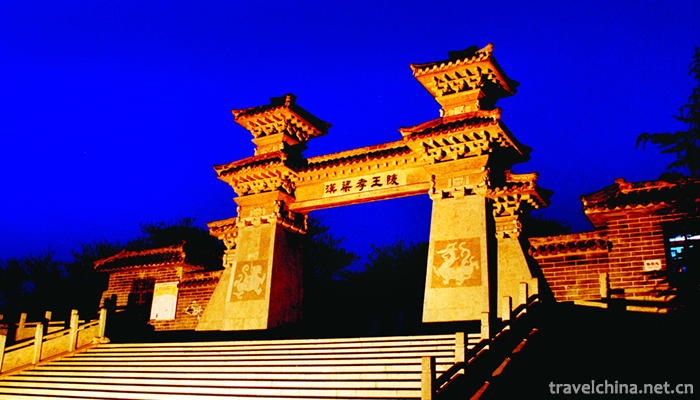

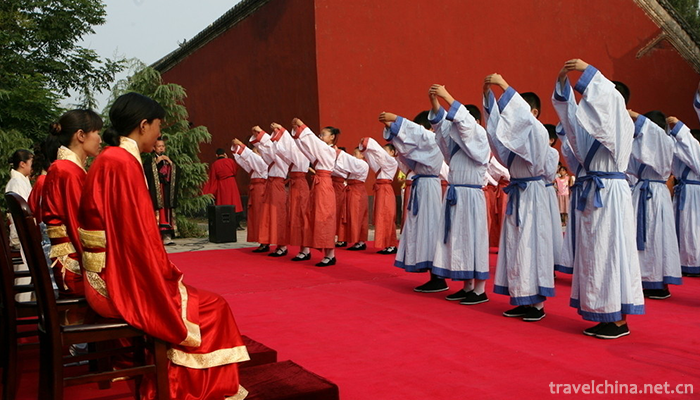
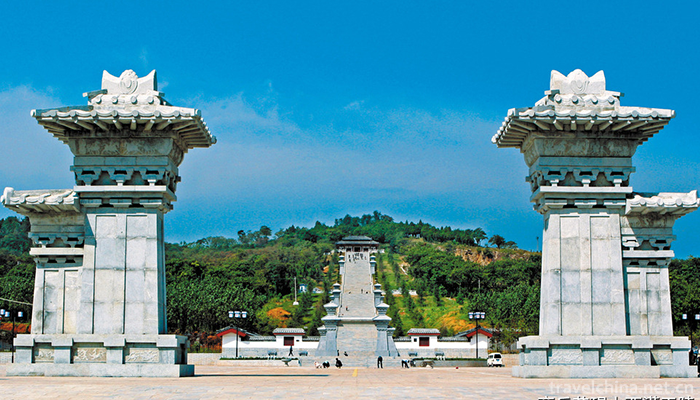
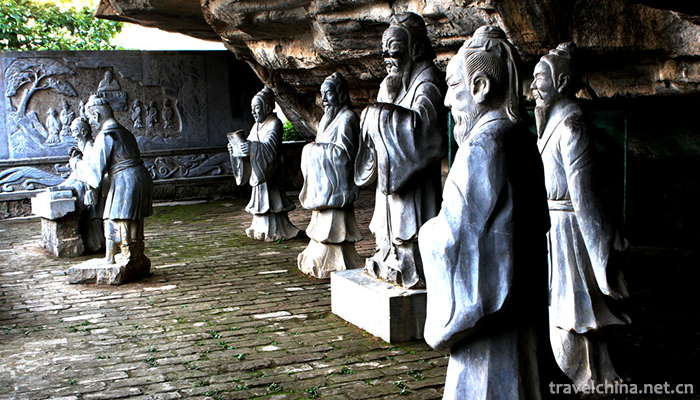
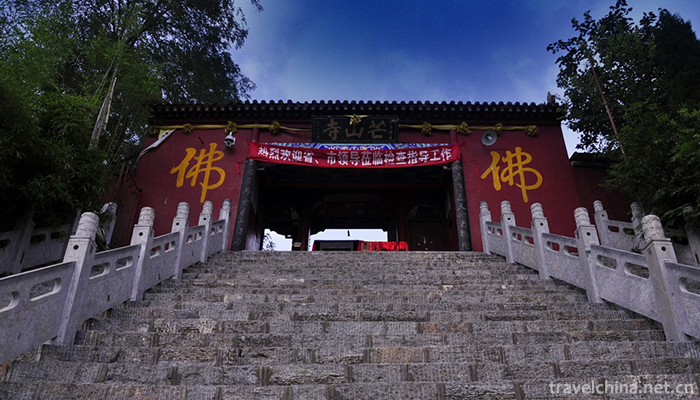

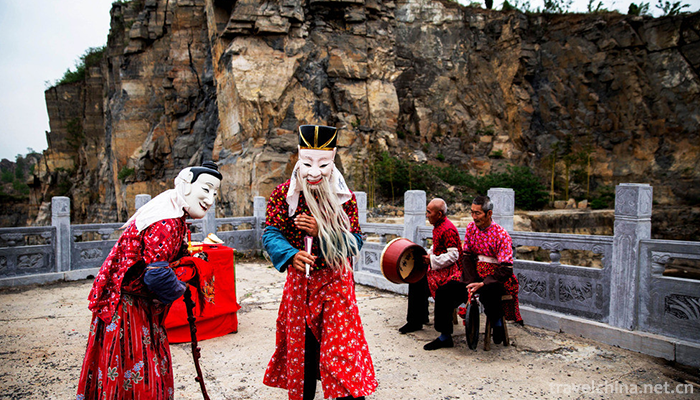
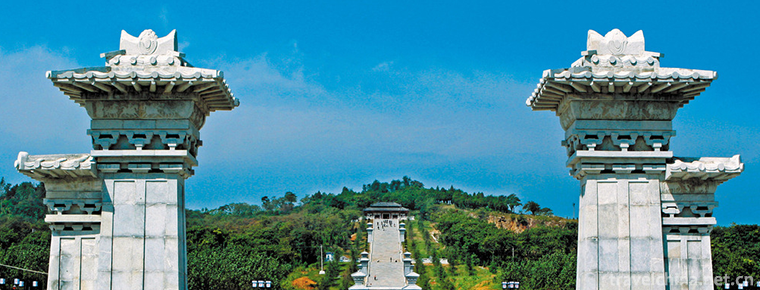
-
1.Wan fo Lake Scenic Area
Wanfo Lake is located in Shucheng County, central Anhui Province. It is a national AAAAA tourist area.
Time 2018-12-08 -
2.Longtan Ecotourism Resort
Lianzhou Longtan Eco-tourism Resort is a tourism project invested and constructed by Lianzhou Aidi Tourism Development Co., Ltd. of Qingyuan City. Based on the original Huangchuan
Time 2019-01-19 -
3.Jiao Yulu Memorial Park
Jiao Yulu Memorial Park (formerly Jiao Yulu Martyrs Cemetery) was built in February 1966. It is located on the old embankment of the Yellow River in the north of Lankao County, Kaifeng City
Time 2019-01-22 -
4.Putuo Zong Cheng
Putuo Zongcheng Temple, located in the north of Chengde Summer Resort and south of Shizigou, Hebei Province, covers an area of 220,000 square meters
Time 2019-02-07 -
5.The Old Site of Command of 115 Division of Shandong Province Government and Eighth Route Army
The former site of Shandong provincial government and 115 division headquarters of the Eighth Route Army is the headquarters of 115 division of the Eighth Route Army, Shandong Branch of the Communist
Time 2019-02-08 -
6.Kazakh Costume
Kazakh people are characterized by pastoral nomadic culture. Their clothes are easy to ride. Their national clothes are mostly made of sheep's skin, fox's skin, deer's skin and wolf's skin, reflecting
Time 2019-05-02 -
7.Hainan Zhai Opera
Hainan Zhai Opera is a traditional sacrificial ritual drama in Hainan Province. It is similar to the Nuo Opera in northern China. It is known as "Nuo Opera in the north
Time 2019-05-02 -
8.Brocade song
Brocade song, formerly known as Gezi or Shijin song, is also called begging tune. It was named Jinge in 1953. This is a form of singing accompanied by instrumental music.
Time 2019-05-07 -
9.Wenzhou opera
Ou Opera has a history of more than 300 years with "written warmth" as its stage language. The more influential traditional plays are Gao Ji and Wu Sanchun, Yanghe Pickup and the modern play
Time 2019-06-08 -
10.Legend of King Qian
The legend of King Qian is a local folklore derived from the life stories of King Qian Si of Wuyue. Linan is the hometown of King Qian. After his death, his legends have been widely circulated in Lina
Time 2019-06-10 -
11.Gong Shuban Lu Ban
Luban (507 BC - 444 BC), Lu people in the spring and Autumn period. Ji surname , a two-character surname Name, class, person. Public transport plate , Public like , Class lose It is also known as &quo
Time 2019-09-07 -
12.Miyaro scenic spot
Miyaro, translated as "fun Bazi", is a provincial scenic spot, located in the Zagunao River Valley of the upper reaches of Minjiang River in Lixian County, Aba Tibetan and Qiang Autonomous Prefecture
Time 2020-11-07